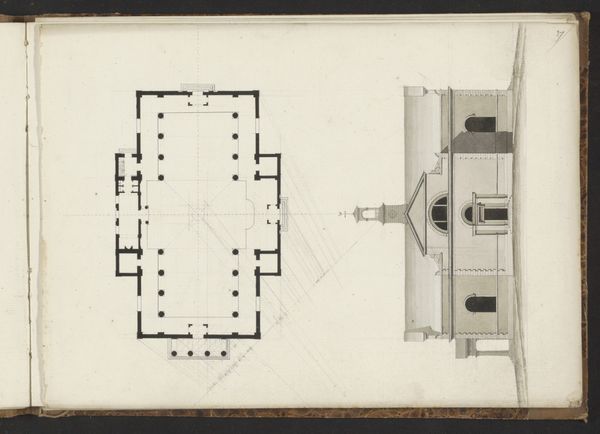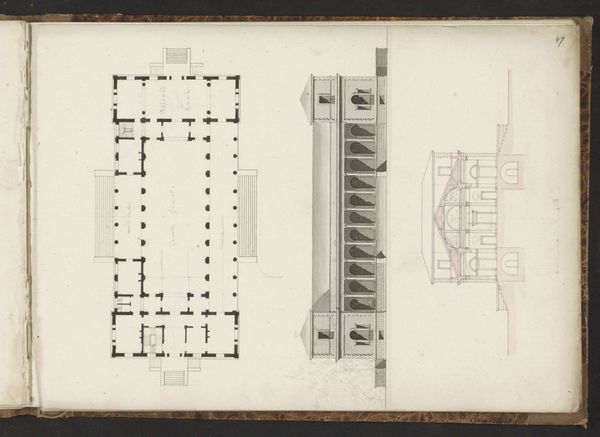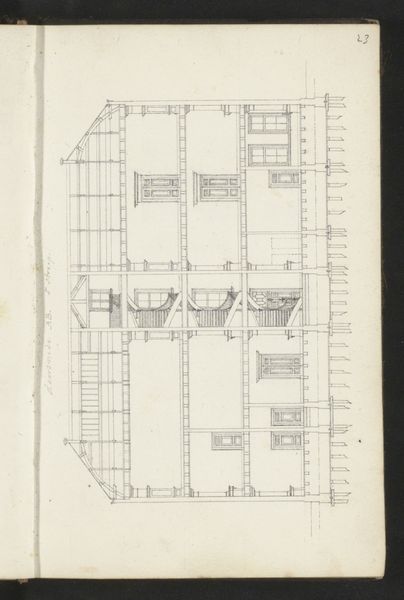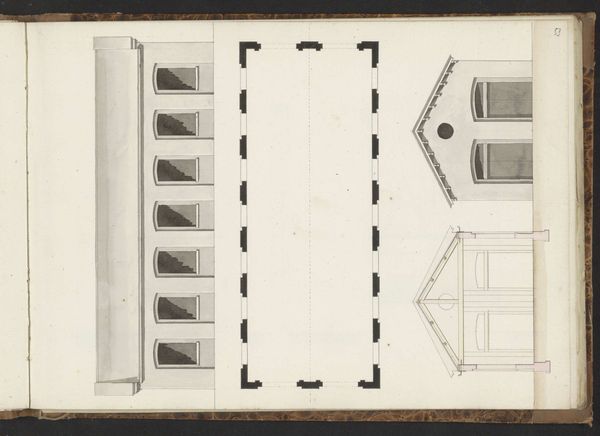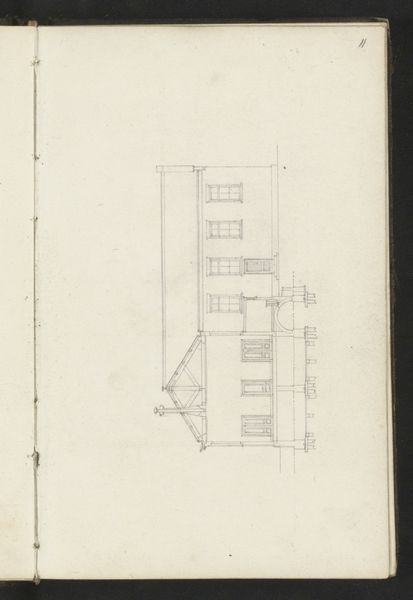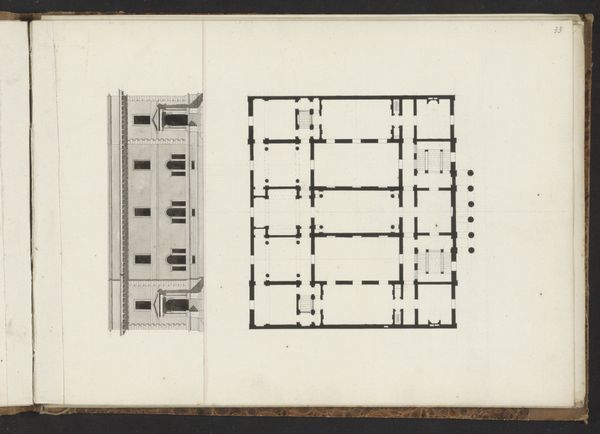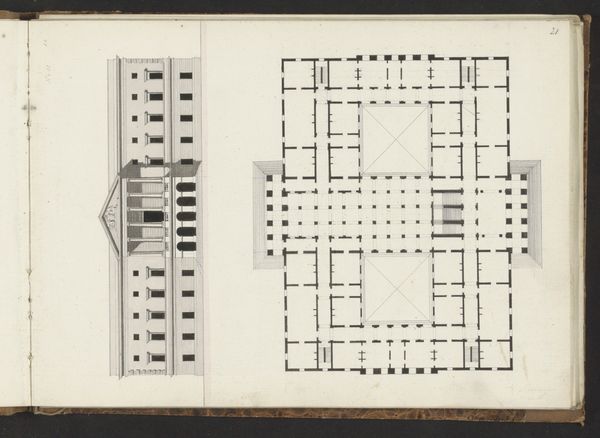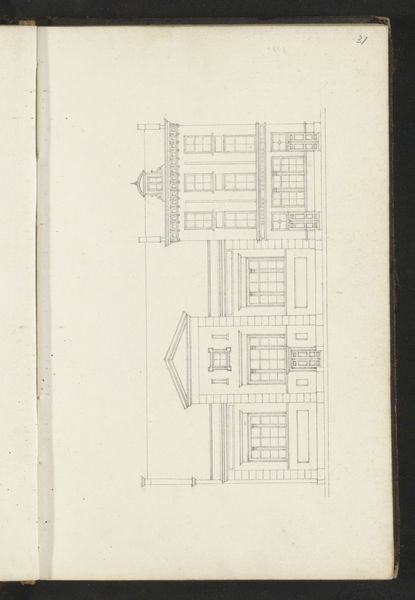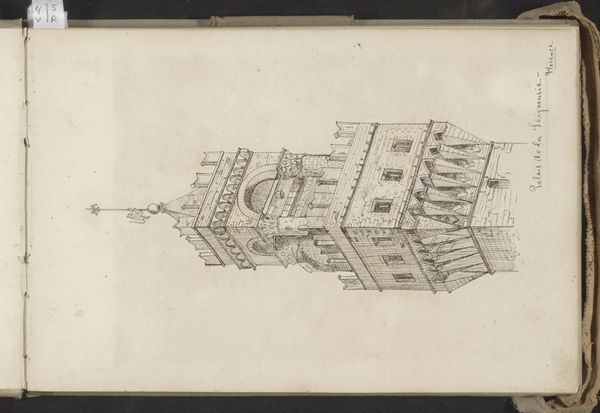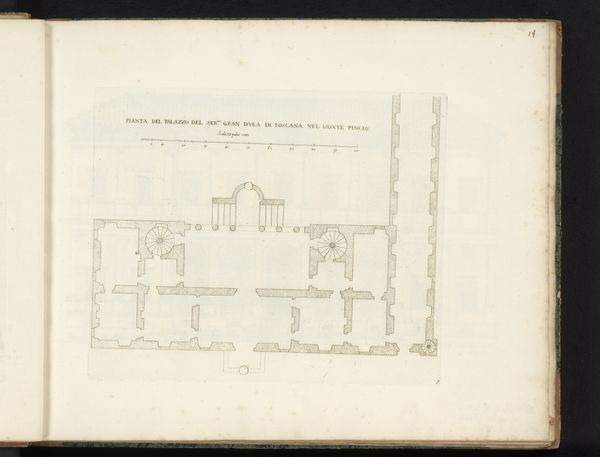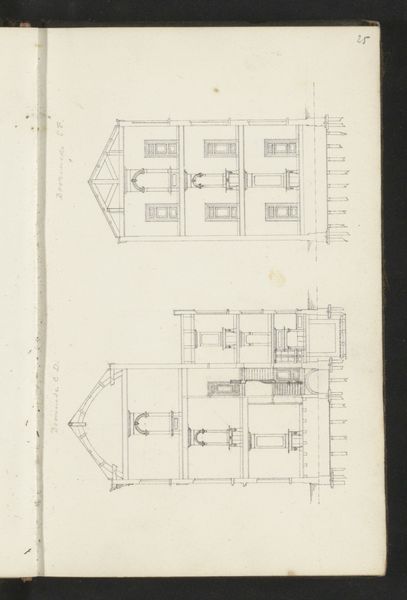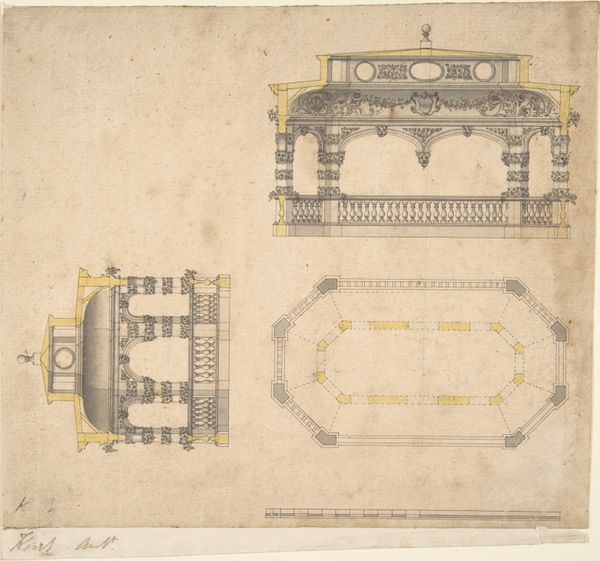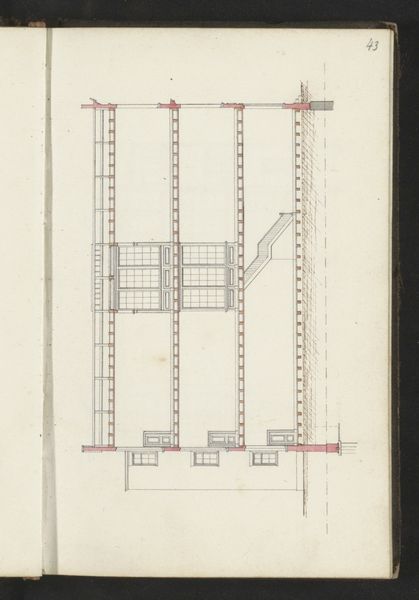
drawing, pencil, architecture
#
drawing
#
form
#
geometric
#
pencil
#
line
#
academic-art
#
architecture
#
building
Copyright: Rijks Museum: Open Domain
Editor: Here we have Willem Springer Jr.'s "Elevation of the Façade and Section of a Villa," dating from 1825 to 1907. It's a pencil drawing offering an architectural rendering. The precision is striking, but it feels oddly devoid of life. What do you see in this piece, considering the period it was made in? Curator: The date is interesting, isn't it? Spread across the 19th century. These architectural drawings weren't simply about aesthetics. They represented power structures, societal aspirations, and even gendered spaces within the home. Consider who was commissioning villas and who was designing them. What narratives do those power dynamics construct, and for whom were these ideal homes being designed and built? Editor: I hadn't thought about it that way. I was focused on the lines and the geometry, but the villa itself represents a certain lifestyle and class. Does the precise rendering style also contribute to that message of control and order? Curator: Absolutely. This almost clinical rendering omits the lived experience, doesn't it? Line drawings create boundaries, delineate space and function. In a way, they mirror and perpetuate the rigid social structures of the time. Are the future inhabitants afforded that same clarity? And how do you imagine this villa might interact with its natural environment? Do you see evidence of gardens or community spaces? Editor: No, it feels quite isolated. It's interesting how a drawing about a building can reveal so much about social dynamics. The lack of human presence now feels quite deliberate. Curator: Precisely. What can architectural plans and sections tell us about cultural shifts and power dynamics in the 19th century, especially in light of evolving ideas about gender and class? It prompts us to examine the stories we tell, and whose stories get privileged in design and art. Editor: That’s a completely different perspective from what I expected. I'll definitely be looking at architectural drawings differently from now on. Curator: Excellent. It is often not about just seeing but understanding.
Comments
No comments
Be the first to comment and join the conversation on the ultimate creative platform.
